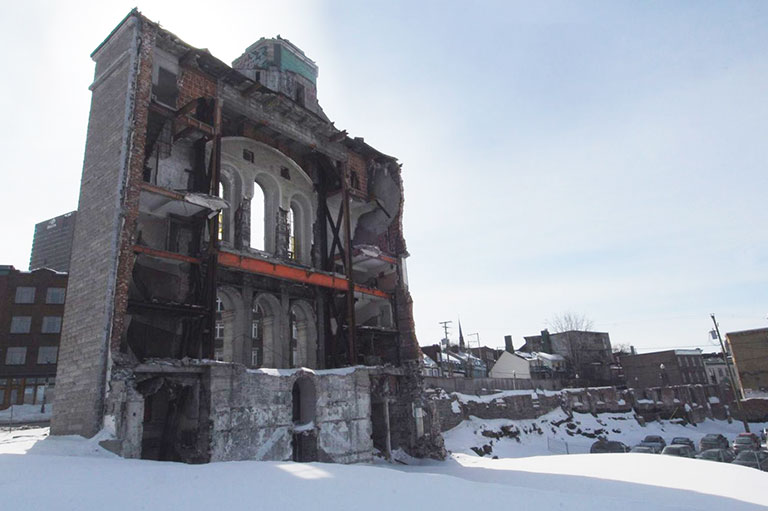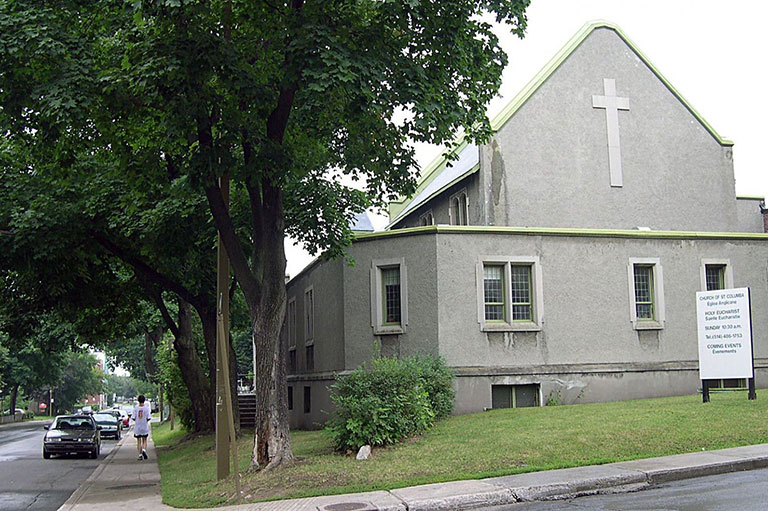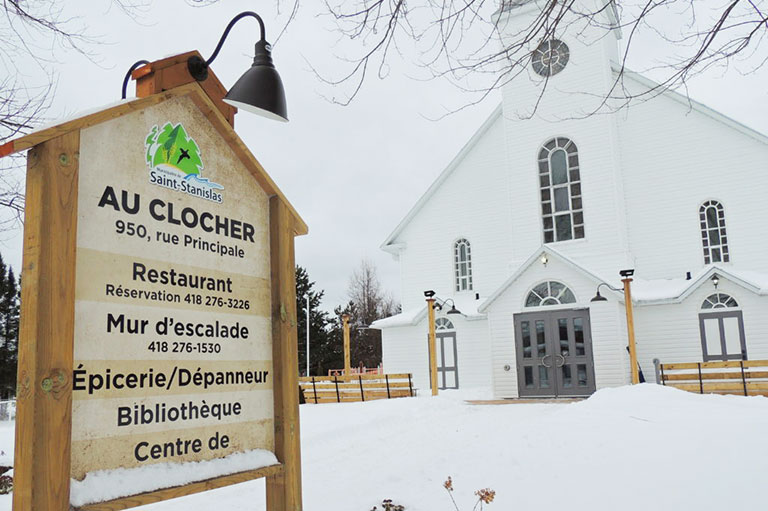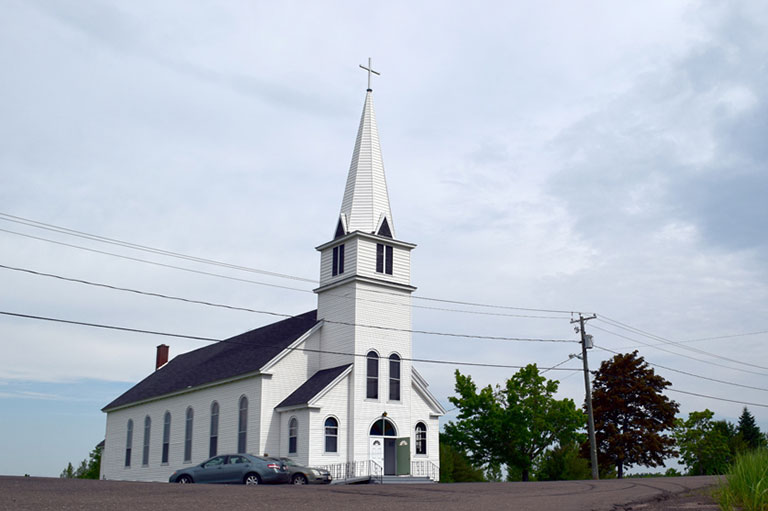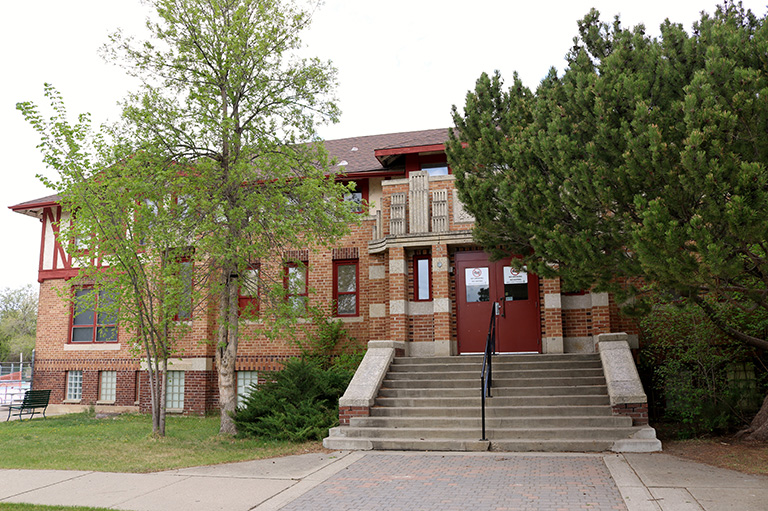Series: Transforming Religious Heritage
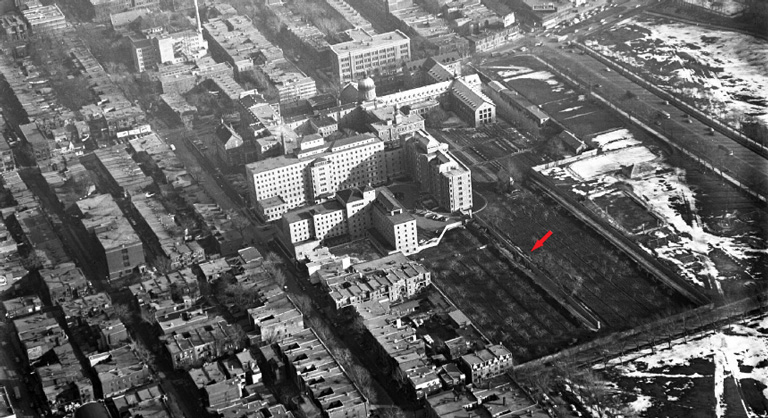
On September 16, 2017, the Centre Hospitalier Universitaire de Montréal (CHUM) demolished a 150-year-old perimeter wall, thereby violating Article 141 of Quebec’s Cultural Heritage Act. While hospital management claimed that the wall was demolished “as a matter of safety” due to its decaying condition, it was nevertheless part of a historic building, which owners are required to maintain in an acceptable state.
In Quebec alone, over 500 buildings related to religious heritage have taken on new roles since 2003. Still in Quebec, since 2009-2010, the government has been investing less and less money for the safeguarding of religious heritage. The same must certainly be true in other provinces across the country.
Given that all historic buildings, sooner or later, will need to be repaired or restored, was this event a symptom of the alarming situation in which Canadian religious heritage as a whole now finds itself?
Religious heritage—what is it?
Religious heritage represents all of the buildings, objects, and knowledge that make up the fruit of the labours of various religious congregations and the clergy of all religions. It has three components: immovable property (places of worship, monasteries, presbyteries, etc.), movable property (liturgical vestments, furniture, archives, etc.), and intangible assets (knowledge, know-how, oral tradition, etc.). All are in danger.
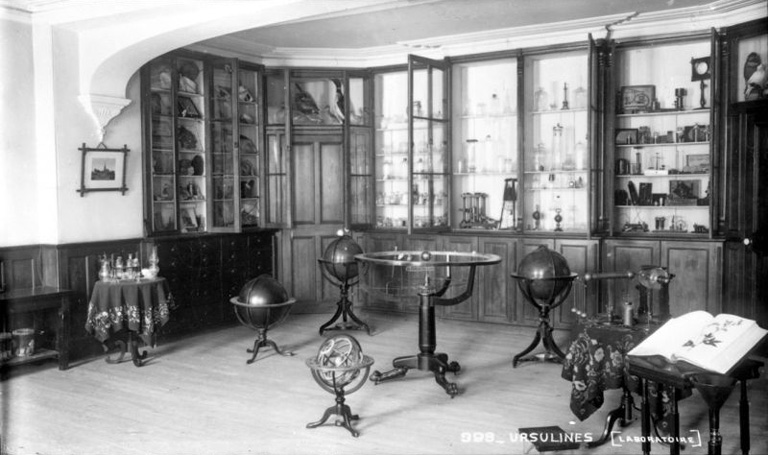
Religious built heritage: a vitally important part of Canadian history
From a historian’s point of view, there is no question of the importance of churches, convents, monasteries, and other religious buildings. Religious built heritage, from the time of New France to the present day, has been one of the most important facets of Canada’s heritage.
On the one hand, religious heritage bears witness to architectural styles that have left their mark on Canadian history. When a parish built a church, or a religious community built a convent, two forces came into play: a sense of origin and current forces.
Almost invariably, any new construction would be inspired by other, familiar, buildings. Then, through a desire to be a bit different, and depending on the constraints of the location, the means, or the manpower, the building would get a little touch of something new.
For example, the Ursuline monastery in Quebec City was built respecting the usual plan used for European monasteries: square, with an interior courtyard called a “cloister.” The European plan called for a gallery surrounding the cloister, so that the monks or nuns could pray while walking around the courtyard. But with Quebec’s harsh winters, snow would surely be a problem. The Ursulines therefore made the innovative decision to include the gallery on the building’s interior as a corridor surrounding the cloister on all four sides.
Failure to make any preservation efforts would be tantamount to reducing our history to but a few examples—architectural landmarks that are not necessarily representative of our Canadian complexity.
On the other hand, places of worship represented—and, in many respects, still represent—key places for the inhabitants of a community. As the natural setting for spiritual life, these buildings also served as the “third place,” according to an idea developed by Ray Oldenburg—that is, a space for socialization that exists parallel to the home and the workplace.
How many meetings have taken place on the front steps of churches? How many social events have been held in their basements? Even monasteries—places which might seem closed to the outside world—have always been places of culture and social innovation.
One need only think of the monks of Oka, producers of an iconic Canadian cheese… or of the Ursulines of Quebec City, who reformed women’s education by incorporating bilingualism, science, and religious tolerance in their curriculum. In this sense, religious buildings are vital elements of Canadian history.
The proper transformation of religious built heritage: criteria
When a religious building can no longer retain its original purpose, transformation becomes an option. There are a number of possible courses of action: some desirable, others unacceptable. To distinguish between an exemplary conversion and an act of heritage destruction, three criteria make the most sense: the building’s future use, its perpetuity, and the commemoration of its former use.
1. Use
Naturally, all religious buildings deserve to be used as intended, according to their original mission: a church remains a church, a convent remains a convent. However, when we begin to consider transformation, this option must often be dismissed. We must then think about the building’s future use. From a historian’s point of view, a new use that would preserve the building’s function as a “third place” is the ideal—like a church converted into a library or a regional history museum, or a small convent converted into an artists’ residence or a youth centre.
Similarly, a conversion that can perpetuate the mission of the building’s former inhabitants is also a noble one—one need only think of a hospital once run by a religious community turned into a local medical centre. In a nutshell, what is desirable is a new purpose that provides a service to the community. A church transformed into luxury condominiums, for example, would lie at the other end of the spectrum.
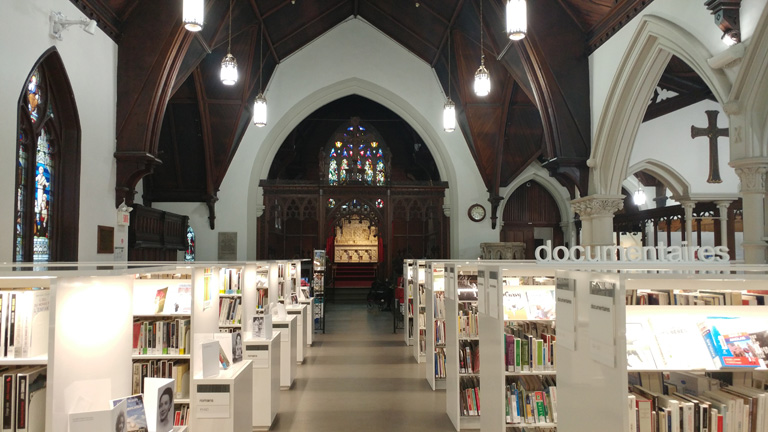
2. Perpetuity
In an ideal world, all religious buildings could be preserved with their original interior and exterior elements intact. However, when these elements are too badly damaged, or when future use does not allow for total preservation (specifically of interiors), we must try to make the best of it: preserving those elements that do not compromise the rest of the building or that do not put future use at risk.
For example, a roof that is dangerously close to collapsing must be replaced to protect the rest of the structure. When a building is damaged beyond any possibility of repair, it should be re-built inspired by the original, or in keeping a distinctive element that provides a suggestion of its former use—like a bell tower.
3. Commemoration
With any transformation, incorporating a commemorative space that pays tribute to the former inhabitants should be an absolute must. The more importance given to the commemorative space, the better the project will be.
In Quebec, the Art and Architecture Integration Policy requires public construction projects to reserve 1% of their budget for the integration of public art. A similar policy, which would require those transforming religious built heritage to invest 1% of their budget in the commemoration of former use, would ensure the buildings’ place in our collective memory.
Four upcoming articles will highlight successes and failures in the transformation of religious heritage in Quebec City, Montreal, elsewhere in the province of Quebec, and throughout Canada. Stay tuned!
Themes associated with this article
Advertisement
You might also like...

Beautiful woven all-silk necktie — burgundy with small silver beaver images throughout. Made exclusively for Canada's History.

Nominate an exceptional history project in your community for this year’s Governor General's History Award.

